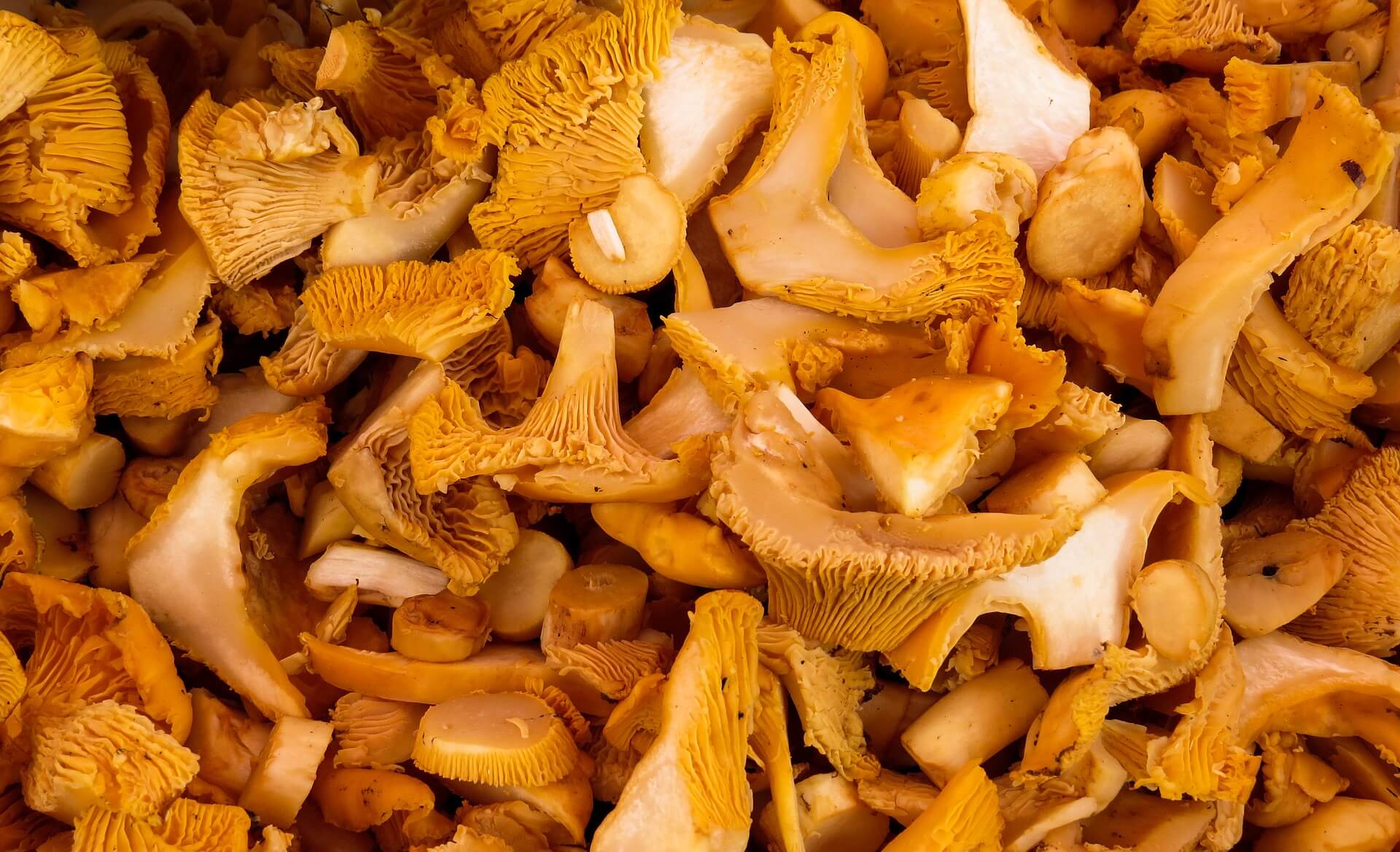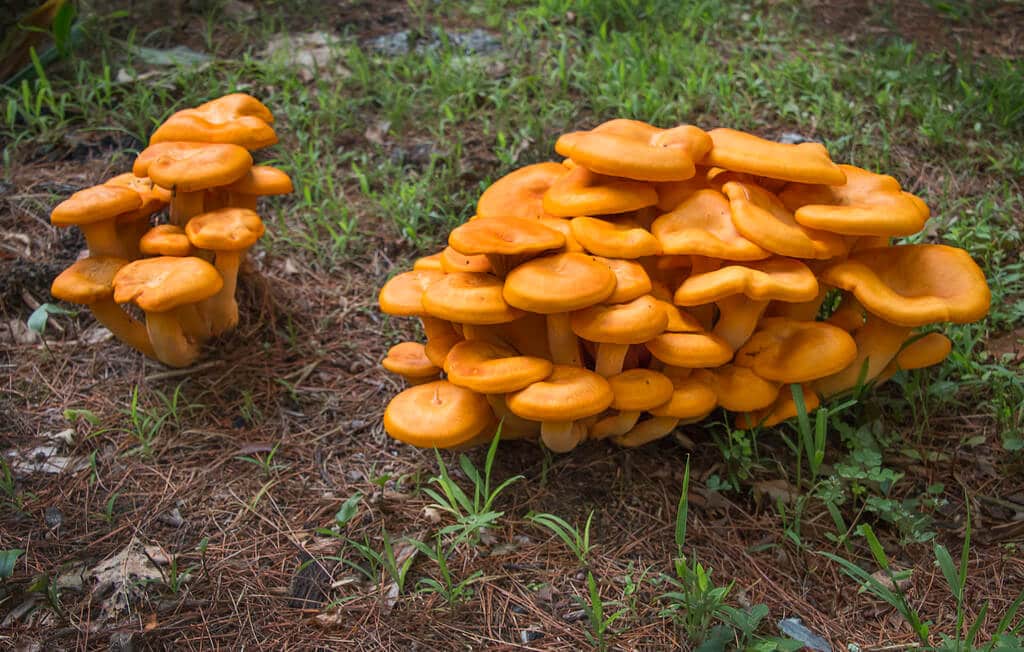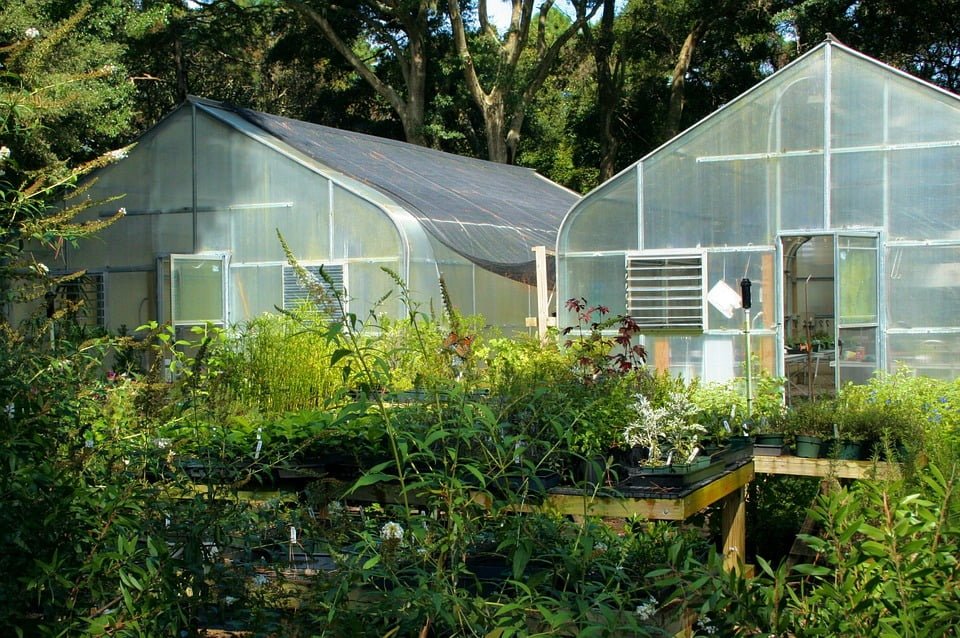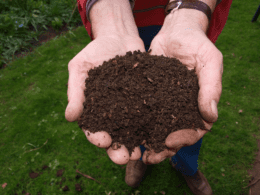Are you tired of spending a fortune on chanterelle mushrooms at the grocery store? Why not grow them yourself and save money while enjoying their delicious flavor?
With the right growing conditions and techniques, you can easily cultivate these meaty, citrusy mushrooms in your own home.
In this comprehensive guide, we will show you how to grow chanterelle mushrooms from start to finish. We’ll cover everything from their preferred growing conditions to harvesting techniques so that even beginners can succeed.
Plus, we’ll help you identify real chanterelles and avoid lookalike mushrooms that may be dangerous to eat. With our tips and tricks for successful cultivation, you’ll be enjoying fresh chanterelle mushrooms in no time!
Can You Grow Chanterelles
Yes, you can grow chanterelles, but it’s important to note that they have a mycorrhizal relationship with certain tree species, which means they form a mutually beneficial association with the roots of specific trees. This symbiotic relationship is crucial for the growth of chanterelle mushrooms.
Here’s a general guide on how you might attempt to grow chanterelles:
-
Selecting a Growing Site:
- Choose a site with well-draining soil and a mix of tree species that have a mycorrhizal relationship with chanterelles. Oak, pine, and spruce trees are commonly associated with chanterelles.
- Ensure the site is shaded or receives filtered sunlight.
-
Preparing the Soil:
- Amend the soil with organic matter, such as well-rotted compost, to create a nutrient-rich environment.
- Maintain a slightly acidic to neutral pH for the soil.
-
Obtaining Chanterelle Spawn or Mycorrhizal Inoculum:
- Chanterelle mycorrhizal inoculum or spawn is necessary for successful cultivation.
- You may be able to purchase chanterelle spawn from specialty mushroom suppliers.
-
Inoculating the Soil:
- Mix the chanterelle spawn or mycorrhizal inoculum with the soil in the selected area.
- Planting during the fall or spring is often recommended.
-
Maintaining Moisture:
- Keep the soil consistently moist, as chanterelles prefer a humid environment.
-
Patience:
- Chanterelles can take some time to establish and produce mushrooms. It may take several months to a few years for them to fruit.
-
Harvesting:
- Harvest chanterelles when they have reached a suitable size, ensuring you cut them at the base rather than pulling them out.
It’s important to note that cultivating wild mushrooms like chanterelles can be challenging, and success may not be guaranteed. Additionally, the cultivation of chanterelles is not as widespread as that of some other mushrooms like oyster mushrooms or shiitake. If you are new to mushroom cultivation, you might want to start with more beginner-friendly varieties before attempting to grow chanterelles. Always follow safety guidelines and consider seeking advice from experienced mushroom cultivators or mycologists.
Chanterelles are a prized ingredient in many dishes, but they can be expensive and difficult to find fresh. By growing them yourself, you can save money and enjoy the freshest possible mushrooms.
To grow chanterelle mushrooms, you need to understand their growing conditions. Chanterelles prefer hardwood forests that have a lot of organic matter on the forest floor. They thrive in moist, shaded environments that have good drainage and low nitrogen levels. The ideal pH range for growing chanterelles is between 4 and 5.5.
You can adjust the pH level of your soil by using lime or sodium chloride. Once you understand the basic growing conditions for chanterelle mushrooms, you’ll be ready to start your own mushroom garden!
Whether you choose an outdoor garden or an indoor setup, there are plenty of options available for cultivating these delicious fungi. With patience and persistence, you’ll soon be enjoying a bountiful harvest of golden chanterelles that will add flavor and richness to all your favorite recipes!
How to Identify the Real from its Poisonous Versions
Before learning how to grow chanterelle mushrooms, it is best to learn its features and how to identify them by heart.
Gills
The first trait that can expose the edible fungus from the beginning is its fake gills. Their location is right on the underside of the mushroom, and they are in fact interlaced wrinkles that look like forked folds. They are quite resistant when you try to remove them. Moreover, they seem like melted bee wax.
By comparison, real gills are well-marked structures that look like an organized collection of blades. You can easily pluck one individual gill from the mushroom without much effort.
Cap
The cap is also useful for identification. It usually develops to a vase or convex shape and has bright nuances of yellow or orange. However, the Cantharellus persicinus species has a color reminiscent of a peach.
Stem
Another distinctive trait is its stem. This single foot is smooth and will never show signs of any bulb, lump or ring around its base. It has the same color as the cap and is not hollow at all.
Synergy with Trees
Chanterelle is mycorrhizal. This means that it cannot live without initiating a symbiotic relationship with one of its favorite trees. With this occasion, it is a good time to learn how to grow your own trees. These two entities help each other to evolve in a harmonious manner. This is why any mushroom you find on its own without even a tree root near it is most certainly not a chanterelle mushroom no matter how strikingly similar a look it may have.
Jack o’Lantern
Now that you know how to spot a real chanterelle, it is time to meet its deceitful versions. These are the false chanterelle and Jack o’lantern. Even though they are as beautiful as the edible one, they contain some harmful chemicals. While they are not fatal, they can cause some serious health issues.
Jack o’lanterns have toxin muscarine that can lead to acute diarrhea and cramps after a meal. The best way to set them apart is by looking at their gills. They might have the same vivid colors as the real chanterelle. However, they have real gills which are similar to a collection of sharp blades.
Moreover, Jack o’lanterns can give its disguise away by growing far from trees. As they are not mycorrhizal, they can grow as they please. Another specific difference is that the toxic ones love to develop in large groups. By comparison, chanterelle mushrooms like to be on their own or with a few others of its type that have their own stems.
False Chanterelle
The other alter ego of the chanterelle is more similar in looks with them than Jack o’lanterns. Some specialists claim that this plant is edible as well. However, its taste cannot equalize the flavor of the true chanterelle. It is too bitter to be considered a delicacy. Moreover, other people suggest that these plants can trigger serious digestive issues. This is why it is best to learn how to identify them in order to avoid them.
Once again, the main difference lies underneath their caps. The false chanterelle has true gills. However, this time the blades are forked on the edges, but they still resemble some sharp sheets of paper.
Moreover, the color of the false version is another trait that gives it away. It has brighter nuances of orange, and you will never find one with a yellow color. On top of that, the nuance is not uniform but graded with a darker orange at the center of the cap.
Chanterelle Growing Conditions
Chanterelles are a type of wild mushroom highly prized for their distinct flavor and aroma. They are often found in forests and are known to form symbiotic relationships with trees. Here are some key growing conditions for chanterelles:
-
Habitat:
- Chanterelles are commonly found in hardwood and coniferous forests.
- They often have a mycorrhizal relationship with certain tree species, such as oaks, pines, and spruces.
-
Soil:
- Chanterelles prefer well-drained soil that is rich in organic matter.
- They are often found in areas with a layer of decaying leaves, moss, and other organic debris.
-
Climate:
- Chanterelles thrive in temperate and boreal climates.
- They are often found in cooler, wetter conditions, typically during the late spring, summer, and fall.
-
Temperature:
- Chanterelles generally prefer cooler temperatures. They can fruit in a range of temperatures, but they often appear after periods of rain or high humidity.
-
Moisture:
- Chanterelles require a consistent level of moisture to fruit successfully.
- They often appear in the wild after periods of rain or in areas with high humidity.
-
Shade and Light:
- Chanterelles are typically found in partial shade or dappled sunlight.
- They may be more prevalent in areas where the forest canopy allows some sunlight to filter through.
-
Season:
- Depending on the species, chanterelles can appear at different times of the year. Some species fruit in the summer, while others may appear in the fall.
-
Microorganisms and Soil Conditions:
- Chanterelles have specific mycorrhizal associations with certain soil fungi. These relationships are crucial for their growth and development.
It’s important to note that while the above conditions are general guidelines, the specific requirements for chanterelle growth can vary depending on the species. Additionally, attempting to cultivate chanterelles can be challenging because of their specific mycorrhizal associations and the complex ecological relationships involved in their natural habitat.
Choose the Best Location for You and Chanterelle Mushrooms
Growing chanterelle mushrooms looks more like racing fate. The plant needs ideal conditions for it to grow. They need a perfect environment and one of its favorite trees for their roots.
As such, the best comrades that can provide for such a fungus are pine, birch, beech, and spruce. Moving forward, the best environment for them is a soil with good drainage and low signs of nitrogen.
So, you will want to test the soil near one of the above trees to confirm if a location is good or not. Therefore, take the soil tester and measure the PH level. This scale should display values between 4 and 5.5.
If none of your nearby areas have the proper balance, there is no need to give up. You can apply some chemistry basics and encourage the pH to rise with the help of some lime or sodium chloride. These elements are perfect for lowering the levels.
An inside industry secret dictates that chanterelle mushrooms shouldn’t be planted next to a tree that is already hosting other mycorrhizal plants. It is uncertain why this is bad for business. However, it is said that such fungi enter in competition with one another and the prize is whole access to the tree. Therefore, your spores might not make it through the day around such species.
Now that you decided on a location, you should prepare the spot a little. Rake the soil with a garden tool and make sure no portion remains compact. Such mushrooms can’t develop in rough conditions. Therefore, you should also avoid generating foot traffic in this area.
Can You Grow Chanterelles Indoors
Growing chanterelles indoors is particularly challenging because these mushrooms have a mycorrhizal relationship with certain tree species. Chanterelles typically form a symbiotic association with tree roots in a natural, outdoor environment. Attempts to cultivate them indoors often face difficulties in replicating the necessary conditions for their growth, and success is generally limited.
Unlike some other mushrooms like oyster mushrooms or shiitake, which can be cultivated more easily indoors, chanterelles are not commonly grown in controlled indoor environments. If you’re interested in cultivating mushrooms indoors, you might want to consider other varieties that are more suitable for indoor cultivation.
Chanterelle Cultivation
Cultivating chanterelles, especially indoors, is challenging due to their mycorrhizal relationship with specific tree roots. However, there have been attempts to develop methods for growing chanterelles under controlled conditions. Keep in mind that success is not guaranteed, and the following steps are more experimental:
-
Research and Preparation:
- Understand the specific mycorrhizal associations chanterelles have with tree species.
- Research successful cultivation techniques and experiments conducted by experienced growers.
-
Growing Medium:
- Create a suitable substrate using a mix of organic materials. Some experiments have used a mix of organic matter like wood chips, leaves, and soil.
-
Tree Bark Inoculation:
- Inoculate the substrate with chanterelle spores or mycelium. Some experiments have involved using sterilized tree bark as a substrate for the mycorrhizal association.
-
Temperature and Humidity:
- Maintain conditions that mimic the natural habitat of chanterelles. This includes cooler temperatures and high humidity.
-
Mycorrhizal Association:
- If possible, introduce the mycorrhizal partner of chanterelles. This may involve establishing a connection with the roots of specific tree species, though this can be challenging in an indoor setting.
-
Patience and Observation:
- Chanterelles are slow-growing, and it may take a considerable amount of time before any fruiting bodies appear.
- Regularly monitor the growing conditions and make adjustments as needed.
-
Harvesting:
- Harvest chanterelles when they have reached an appropriate size, cutting them at the base rather than pulling them out.
It’s essential to approach chanterelle cultivation with a willingness to experiment, as successful indoor cultivation is not as established as it is for some other mushroom varieties. Consider consulting with experienced mushroom cultivators or mycologists for the latest information and advice specific to chanterelles.
Propagation Methods
If you’re interested in cultivating these delicious delicacies, there are a variety of propagation methods available for increasing your supply.
One popular method is spore production. Chanterelle mushrooms produce millions of spores that can be used to create new mycelium cultures. You can collect these spores by placing a mature mushroom cap on a piece of paper and waiting for it to release its spores.
Another effective propagation method is the use of substrate. Substrate refers to any organic material that contains the nutrients necessary for mushroom growth. To grow chanterelles, you’ll need to find a substrate that mimics their natural habitat. Some good options include hardwood sawdust, straw, and coffee grounds.
Once you’ve obtained your substrate and inoculated it with spores or mycelium, all that’s left to do is wait for the mushrooms to fruit!
Depending on your growing conditions, this process can take anywhere from several weeks to several months. But with patience and persistence, you’ll soon be rewarded with a bountiful harvest of golden chanterelles.
Harvesting Techniques
Get ready to taste the mouth-watering flavor of these golden delicacies as we explore the best techniques for harvesting and enjoying chanterelle mushrooms.
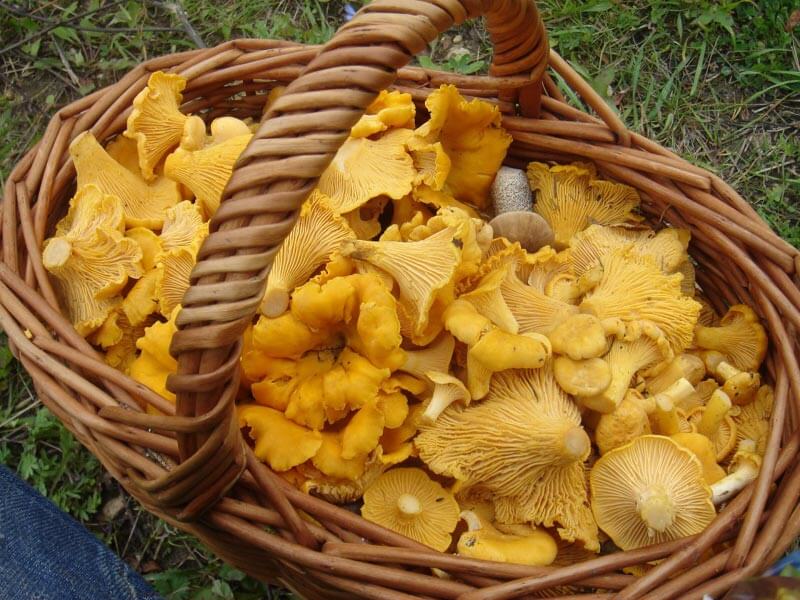
When it comes to harvesting chanterelle mushrooms, it’s crucial to avoid damaging the mycelium. To do this, use a sharp knife or scissors to cut at the base of the mushroom, leaving behind its base for a second harvest and scattering small parts for spores.
After harvesting, cleaning is crucial to avoid gritty and sandy meals. Use a toothbrush to gently clean any dirt or debris from the mushroom’s cap, stem, and true gills.
Once cleaned, chanterelle mushrooms can be stored in a paper bag in the fridge if used within 10 days or frozen after cooking in oil or butter. The cooking liquid can also be used to add flavor to soups.
Enjoy their nutty and earthy flavors by adding them to your favorite recipes!
Lookalike Mushrooms
The section that follows delves into identifying lookalike mushrooms, which is crucial in avoiding poisonous varieties and enjoying the delectable flavors of these gourmet fungi.
One of the most common false chanterelles is the jack-o-lantern mushroom, which can cause severe cramps and diarrhea. These poisonous mushrooms have a bright orange color, similar to the golden hue of chanterelle mushrooms.
To identify real chanterelle mushrooms, look at their gills, cap, and stem. True Chanterelles have a funnel shape with pronounced gills that are not forked folds or wrinkles like false chanterelles. The stem also has decurrent false gills that run down its length.
Always be careful when foraging for wild mushrooms and only consume those positively identified as safe to eat.
In summary, knowing how to identify lookalike mushrooms is essential when growing or foraging for chanterelle mushrooms. False chanterelles such as jack-o-lanterns can cause serious health issues if consumed.
Always take precautions when handling wild mushrooms and only consume those positively identified as safe to eat to enjoy their meaty citrus flavor in soups, sauces, souffles, sautes or other dishes.
Chanterelle Grow Kits
Growing chanterelle mushrooms has never been easier with the help of these beginner-friendly kits, which come equipped with everything you need to start producing your own golden chanterelles in no time.
Here are three reasons why you should consider investing in a chanterelle grow kit:
- They provide an easy and convenient way to grow delicious gourmet mushrooms right in your own home.
- Chanterelle grow kits are perfect for beginners who want to try their hand at mushroom cultivation without worrying about the complexities of traditional growing methods.
- With these kits, you’ll have access to fresh, organic mushrooms anytime you want them – all while saving money on expensive store-bought varieties.
Whether you’re looking for a new hobby or simply want to add some fresh ingredients to your cooking repertoire, chanterelle grow kits offer an easy and rewarding way to explore the world of mushroom cultivation.
So why wait? Start growing your own batch of delicious chanterelles today!
Can Proper Shoveling Techniques Help with Mushroom Cultivation?
Can proper snow shoveling techniques for back pain help with mushroom cultivation? While it may seem unrelated, the importance of using correct techniques can extend beyond shoveling snow. In mushroom cultivation, maintaining proper posture and body mechanics during tasks like lifting bags or bending can prevent back pain and injuries. So, adopting appropriate techniques while shoveling snow might indirectly support individuals engaged in mushroom cultivation.
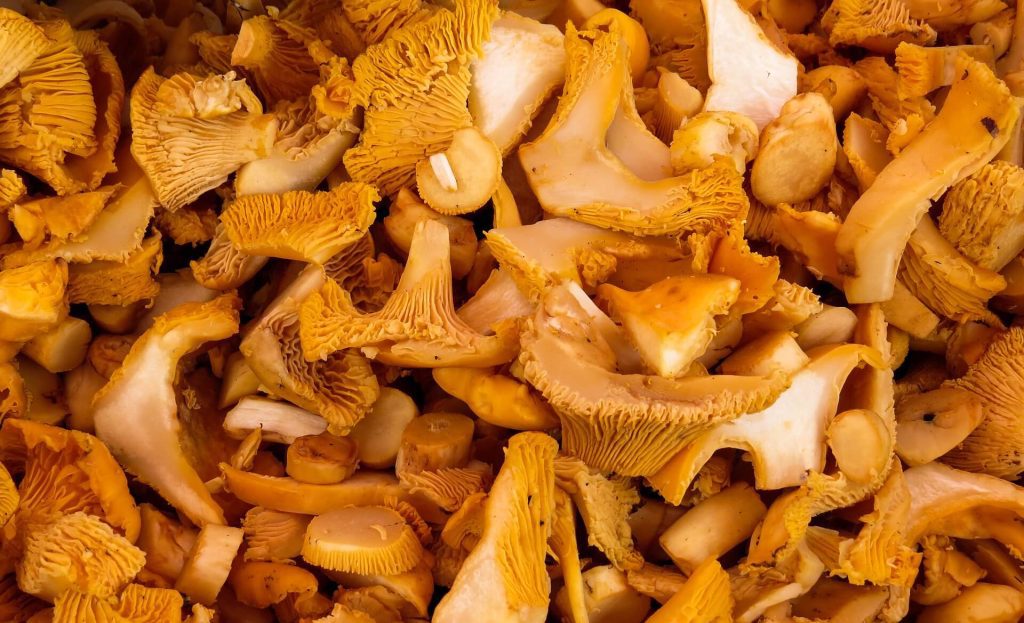
Incorporating mushroom cultivation into your daily routine not only provides fresh produce but also offers numerous other benefits. From learning about different species of mushrooms to potentially starting a profitable business, growing chanterelle mushrooms with beginner-friendly kits might just become your new favorite hobby!
Some Frequently Asked Questions On Chanterelle Growing
Where Do Chanterelle Mushrooms Grow
Chanterelle mushrooms typically grow in hardwood and coniferous forests, forming symbiotic relationships with specific tree species. They thrive in well-drained soil rich in organic matter and are commonly found in cooler, temperate climates during late spring, summer, and fall.
Propagating chanterelle mushrooms can be challenging due to their mycorrhizal nature and specific ecological relationships. Unlike some mushrooms that can be cultivated using spores or mycelium, chanterelles often require a symbiotic association with tree roots. Here are some general steps for attempting to propagate chanterelle mushrooms:
-
Understand the Mycorrhizal Relationship:
- Chanterelles have a mutualistic relationship with certain tree species. Their mycelium interacts with the tree roots, exchanging nutrients and forming mycorrhizal networks.
-
Identify Suitable Tree Species:
- If attempting to propagate chanterelles, it’s essential to identify and understand the specific tree species with which they form symbiotic relationships.
-
Collect and Preserve Mycorrhizal Material:
- Collect soil and root material from areas where chanterelles naturally grow. This material contains the mycelium and helps establish the symbiotic relationship.
-
Prepare Growing Medium:
- Create a growing medium that mimics the natural conditions of the forest floor, incorporating organic matter and nutrients.
-
Inoculate Tree Seedlings:
- Inoculate the roots of tree seedlings with the collected mycorrhizal material. This can be done by mixing the material with the planting medium or applying it directly to the roots.
-
Create a Suitable Environment:
- Provide the right environmental conditions, including proper light, temperature, and moisture levels, to encourage the development of the mycorrhizal association.
-
Patience and Observation:
- Mycorrhizal associations take time to develop. Be patient and observe the growth of the tree seedlings over an extended period.
-
Transplanting:
- Once the mycorrhizal association is established and the tree seedlings have grown, consider transplanting them to an outdoor location where chanterelles naturally thrive.
It’s crucial to note that cultivating chanterelles is a complex process, and success may vary. Additionally, chanterelles are often best enjoyed in the wild, and attempts to cultivate them commercially or domestically can be challenging due to their specific ecological requirements and mycorrhizal relationships.
How long does it take for chanterelle mushrooms to fruit after planting spores?
Chanterelle mushrooms can take up to two years to mature and begin fruiting after planting spores. It’s important to control their growing conditions, including light and temperature, while also maintaining soil pH levels between 4 and 5.5 for optimal growth.
However, with patience and proper care, chanterelles can be a rewarding addition to your garden or home cultivation setup. Remember to avoid mistaking them for poisonous lookalike mushrooms such as the Jack-o-lantern mushroom, and always follow safe foraging practices.
Can chanterelle mushrooms be grown in containers?
No, chanterelle mushrooms cannot be grown in containers because they rely on mycorrhizal associations with specific trees, and replicating these complex ecological relationships in a container setting is inherently challenging.
What is the best type of soil for growing chanterelle mushrooms?
To successfully grow chanterelle mushrooms, it’s important to have the right type of soil.
The ideal pH range for growing these delicacies is between 4.0 and 5.5, so you’ll want to use a mixture of peat moss, sand, and organic matter to achieve this level.
It’s also crucial that the soil has good drainage and low nitrogen levels.
Avoid planting near other mycorrhizal plants to reduce competition and help your chanterelles thrive.
With the right soil conditions in place, you can enjoy a bountiful harvest of these tasty mushrooms in no time!
Can chanterelle mushrooms be grown in warmer climates?
If you live in a warmer climate, you may be wondering if it’s possible to grow chanterelle mushrooms. Unfortunately, these delicate and prized fungi require cool and moist environments to thrive.
While some varieties of mushrooms can tolerate higher temperatures, chanterelles are not one of them. Attempting to grow them in warmer climates would likely result in failure and disappointment.
However, don’t let that discourage you from exploring other types of mushrooms that may be better suited for your location. Remember to always research and follow proper growing techniques for any type of mushroom cultivation.
Are there any specific pests or diseases that affect chanterelle mushroom growth?
To ensure successful growth of chanterelle mushrooms, it’s important to be aware of potential pests and diseases that can affect their growth.
One common pest is the fungus gnat, which can lay eggs in the soil and damage the mushroom’s mycelium. To prevent this, keep the growing area clean and free from decaying plant matter.
Another issue is contamination from bacteria or other fungi, which can cause discoloration or rotting of the mushrooms. Maintaining proper humidity levels and avoiding overwatering can help prevent this.
Additionally, it’s important to properly identify chanterelle mushrooms before harvesting to avoid consuming poisonous lookalikes such as jack-o-lantern mushrooms.
Conclusion
Congratulations! You now have the complete guide and all the information you need to grow your own delicious chanterelle mushrooms at home.
Remember to provide them with the right growing conditions, including a moist and shaded environment, and use proper propagation methods like spore or mycelium inoculation.
When harvesting, be sure to identify real chanterelles from lookalike mushrooms, and gently twist and pull the stem from the ground.
With a little patience and attention to detail, you can enjoy the benefits of mushroom cultivation such as saving money on expensive grocery store prices while having fun experimenting in your garden.
Plus, there’s nothing quite like savoring a meal made with fresh chanterelles that you grew yourself.
Happy cultivating!






